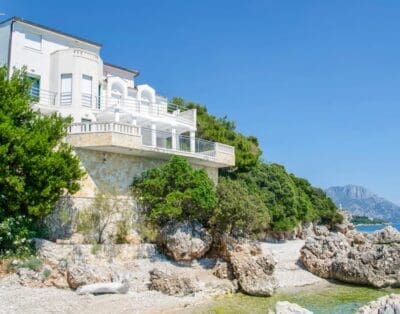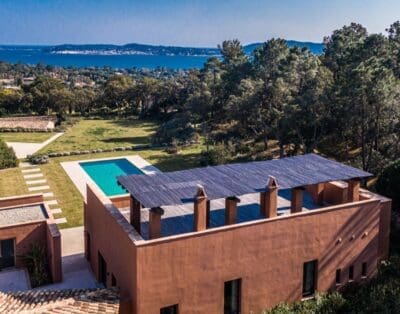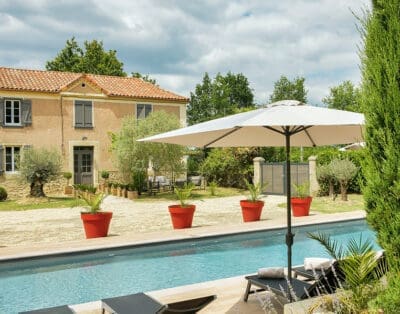Bruichladdich Whisky – The Innovator: McLaren 720S Scotland Tour
The drive to Bruichladdich on the isle of Islay is nothing short of beautiful. Twisty roads, stunning coastal views, and if you are lucky, fine weather. But I don’t recommend you drive, opt for a taxi instead from the town of Bowmore and enjoy what this exciting distillery has to offer – incredible whisky.
Viscount Yves and I were greeted by Mary, an ever-present figure at the distillery, full of wisdom, stories and charm. Her relationship with the distillery goes back generations – her great-grandfather helped build the distillery, whilst her father worked there. For Mary, the distillery was her childhood playground.
It is a playground that has hardly been touched by time. Built around a courtyard, much of the equipment used today is the same as installed in 1881 by the Harvey Brothers, who founded the distillery. They had come from a family who had owned distilleries for over 100 years. It is with their inheritance that they built Bruichladdich from scratch on the shores of Loch Indaal. It is hard to describe the ruggedness and beauty of this part of Islay (in fact the whole of the Island). For Mary, to have the distillery to play in and the beach just a few metres away must have been idyllic. Mary herself refers to it as the “Coast of Heaven”.
Having been mothballed by its owners in 1994, it lay dormant for many years before wine merchant Mark Reynier stood at the gates and gazed in. A vision was born. On the 19th of December 2000, he and fellow wine merchant Simon Coughlin completed a deal to purchase the distillery for £7m and bring it back to life. A lot of work was needed to recommission the historic site, and this was undertaken from January to May 2001. The decision was made to keep much of the original machinery, which to my mind was masterful. To see Victorian era equipment in production, complete with odd-shaped rods that have presumably been repaired countless times in the past, using parts found as opposed to being the correct fit, is quite unique.
Purchasing a distillery is one thing, operating it is another. Whilst on paper it might seem a straightforward process it is anything but. So many variables are at play, some obvious (which barrels to use), some hard to change (the shape of the stills) and some you may not consider (the type of barley and how it has been roasted). With such a sizable investment, it was key to have a leader who was ingrained into the industry. They hired legendary Master Distiller Jim McEwan MBE, who had started work at the age of fifteen, 8.5 miles away at the Bowmore Distillery as a trainee cooper.
In 1976 at the age of 28, Jim had reached the level of cellar master at Bowmore before leaving for Glasgow to further expand his knowledge and train as a blender. The lure of Islay, which seems to impregnate everyone who visits, saw him return to Bowmore in 1986 as the distillery manager. The purchase of Bruichladdich and the prospect of revitalising the distillery must have appealed to him, as in 2001 he was brought in to manage the distillery and make the whisky.
Provenance is paramount to Bruichladdich. It is part of their DNA. They firmly believe that whisky should have a sense of place, and its origin should be ever present in whisky. This starts with as much barley being sourced from Scotland as possible, but also from the island itself. In 2001 the number of farms growing barley on the island for the distillery was zero. By 2004, barley was being grown at Kentraw farm by Raymond Stewart. It was the first barley from Islay to be grown and distilled on the island in years. It is this innovation and pride in Islay that stands Bruichladdich apart.
Their foresight and beliefs have paid off. Today there are 20 farms growing Islay barley. Being one of the only ingredients in whisky, Bruichladdich became obsessive about it. Mark and Simon, both from the wine trade, and the aforementioned Jim McEwan MBE, sought to show that terroir had a place in whisky as much as in wine. This commitment, not only to the island but to the local community (Bruichladdich is the biggest private employer on the island with 111 employees), has seen this relentless pursuit of place lead to crop diversity. In 2017 they asked Andrew Jones, a local farmer, to grow Rye. I will be fascinated to taste this, and wonder what else they might have in the pipeline or already maturing. I am not a farmer, but I imagine that climate would be a determining factor. My mind envisions corn, but would it grow there and would they be allowed to grow it?
The whisky industry is full of interesting characters, and none more so than on Islay. Mary recounted the story of Duncan, an old senior member of staff who would save every penny. Legend has it that if he found a rusty but usable nail, he would clean it up. He would wear two left gloves if the right one disintegrated, as still functional. It is these people that make drinking whisky and visiting distilleries so appealing. It is not always clinical, corporate or on show. Distilleries like Bruichladdich entertain as much as enthral with their whisky.
Bruichladdich is also a caring distillery (they have B-Corp status). On 29 May 2001, Jim McEwan asked Mary to follow him, taking her away from her job. She had no idea where he was taking her, until they entered the still room. Jim had personally taken the time to find her so she could witness the very first distillate coming off the stills. What a lovely gesture that was, to share such a simple, yet historic moment. A story that still lights up Mary’s eyes as she recounts it today.
They are not afraid to experiment and push the boundaries. To drink their whisky is to feel part of a welcoming club. Their labels provide a great deal of information, which is mostly not present on others. You feel like you are part of their community and journey. As if whisky is being made especially for you. Pioneers, progressive and provocateurs are 3 terms the distillery used to describe itself. This isn’t just marketing speak, but dashes of realism that are evident to see. One other “P” is paramount to Bruichladdich which is Provenance. Whilst others choose to import barley from outside Scotland, theirs is 100% Scottish. Whereas other distilleries choose to age in warehouses on the mainland, mainly due to financial considerations, Bruichladdich is matured on Islay.
This feels like a craft distillery, but on a commercial scale. You can sense the passion and pride of the staff as you walk around. There is no one here just for a job – everyone is full of enthusiasm and a willingness to share their story. This is paid back by wonderful gestures to long-term colleagues. Mary showed us her very own cask, maturing in the warehouse until a time she sees fit to bottle it. It was given to her by the distillery.
At the end of the tour Mary very kindly read out a poem she had written for the (online) 2020 Open Day at the distillery – ‘Where Would We Be Without You”. One might imagine that the poem would be to the whisky, but it wasn’t. It was an ode to the staff, far and wide, a poem of community, togetherness and passion. It was very touching and spelt out just what the distillery means to Mary and everyone else. It gave me a desire to work for them for a few weeks at least, on a voluntary basis, to really get to understand this forward thinking distillery.
We had an opportunity to see the inside of the historic rake and plough 7-ton, cast iron Mash Tun as it was being cleaned and to stand inside it. It really gave a sense of scale and how the rotating arm revolves to mix the grain helping the extraction of sugars. I believe only 3 of this type of Victorian mash tun are still in existence in Scotland today, with most using Lauter Tuns, so it was rather special. Sensing my excitement in seeing this Tun, Mary kindly requested they turn it on so we could see exactly how the arms revolve, after which it provided the perfect location to take a portrait of Neil Gillies (otherwise affectionately known as ‘Gillie’). When Remy Cointreau purchased the distillery in 2012 they wanted to increase production significantly. The management team stood firm though and pointed out it would completely change the character of Bruichladdich so not advisable. A compromise was agreed and instead of replacing the Mash Tun, which would have doubled the speed at which it operated, they rebuilt it.
Since Jim retired in 2015 (subsequently coming out of retirement to work at Ardnahoe) Adam Hannett has taken charge of the whisky making. Adam started back in 2004 as a tour guide at the distillery, having dropped out of university on the mainland as he didn’t like it. Through careful listening and soaking up knowledge Adam has become Head Distiller. Being Jim’s understudy would have been a huge privilege and a unique opportunity, which he clearly relished. Given that Bruichladdich is all about being different and experimenting, the styles of some of the whiskies, such as the Black Art series, will now have Adam’s signature on them.
The core range falls into three distinct categories, all distilled in the same way in their tall and narrow-necked stills. All are bottled without colouring or chill filtration.
Bruichladdich
Unusually for Islay, these are unpeated whiskies made to show the character of the barley itself. Aside from the Classic Laddie, instantly recognisable from its aqua bottle, the range all come with the year of distillation on the bottle, and information about the barley, which is always 100% Scottish (the only exception to this rule is the barley grown for The Biodynamic Project. This barley was grown at the carbon-zero Yatesbury House Farm in Wiltshire, England, which sequesters ten times more carbon than it emits). Also included in the range is a 100% Islay barley and one made from Bere barley. Bere barley is Britain’s oldest strain of barley, but fell out of popularity with farmers looking for a higher yield, whilst sacrificing flavour.
Port Charlotte
This range is peated, so consistent with the style of whisky you would expect to find on Islay. The difference being that the Port Charlotte smoke is quite different to the other whiskies on Islay. While the other peated whiskies (e.g. Laphroaig, Lagavulin etc.) have an intense, slightly medicinal peat smoke flavour, Port Charlotte is more of a gentle, barbeque smoke, so ideal for those venturing into this world of beautiful smokiness for the first time.
Octomore
The Octomore range takes peat to another level. In fact, they are the world’s smokiest whiskies so quite an acquired taste (that I love). Within this range are 4 expressions, which are differentiated by a numbering system. Using the current release, 13, as an example, they can be differentiated as follows:-
13.1 – These have primarily been aged in ex-American oak with 137.7 PPM of peat.
13.2 – Following the same principle and batch of barleys as the 13.1, these differ having been aged in European oak for comparison. In this case, Oloroso casks were used but previous editions have been in Sauternes amongst others.
13.3 – This single estate, single vintage bottle was distilled from barley grown on James Brown’s land, at Octomore farm. It was aged initially in American whiskey barrels before the selection of second-fill European oak casks, from the Rivesaltes region of France and the Ribera del Duero region of Spain.
Tasting these whiskies is an experience in itself. With exceptionally high levels of peat and roughly 60% alc, they are a real delight for smoke seekers that search big, powerful and bold whiskies.
I mentioned above PPM (part per million) which measures the phenol content of the malted barley after it has been kilned. This is what gives the whisky its smokiness. As the peat is burnt in the kiln the smoke rises and attaches itself to the moist barley. How long this lasts determines the PPM levels. It is not a guide to the actual smokiness of the whisky though but acts as a good guide.
Other Releases
Black Art – These prized and sought after expressions are the epitome of creative freedom, hence the name. This is the one bottle where transparency on the label or elsewhere is not at the fore. What is contained within is known only to Adam, although on the current release they do declare that it is at least 29 years of age.
Micro Provenance – I am a huge fan of these single cask expressions which come in frosted bottles and look fantastic on any shelf. This is where you can explore differing cask finishes, allowing hard core fans the opportunity to explore flavour, yet find the Bruichladdich DNA within.
Tasting Notes
The Ternary Project 52.1%
What a nose! Honey, heather, burnt caramel and smoke show in abundance. The palate is full, and savoury, with a slight salinity. It is meaty initially, and then aromas of red apples start to materialise before giving way to dark cherries and chocolate. It has a lovely sweetness to it, but not one that detracts from anything else. It is rich, full and multi dimensional.
Port Charlotte SC:01 2012 55.2%
A relatively light nose of toffee, honey, marmalade and melon complemented by smoke. More powerful on the palate, it is fresh with tropical notes and a lovely oily mouthfeel. Some dried figs and ginger and a smokiness that builds, leaving a taste of delicious slightly charred sausages from the BBQ.
Black Art 10 29 Year Old 45.1%
Barbecued pineapple slices with sea salt gives this whisky a wonderful nose. The palate has a wonderful flavour of spices such as cloves and black pepper and a meatiness like a dry-aged steak. After time, notes of dark chocolate covered almonds emerge with cherries, vanilla, and apricot. A whisky to really savour the complexity of.
Octomore 13.1 59.2%
Orange marmalade on burnt toast gives the nose on this Octomore a clear identity. The citrus note fighting through the smoke to add character and balance. The palate is dry and nuanced with the smoke building for some time. It is almost a juxtaposition with its lightness but at the same time depth and power. An incredible length.
Octomore 13.2 58.3%
The additional Oloroso cask finishing adds another layer to this Octomore. It adds a funkiness to the nose that for some reason reminds me of Bovril. The fruits shine through on the palate with that lovely raisiny flavour you would expect. They dance with the smoke but in unison – a perfectly timed tango you might say.









